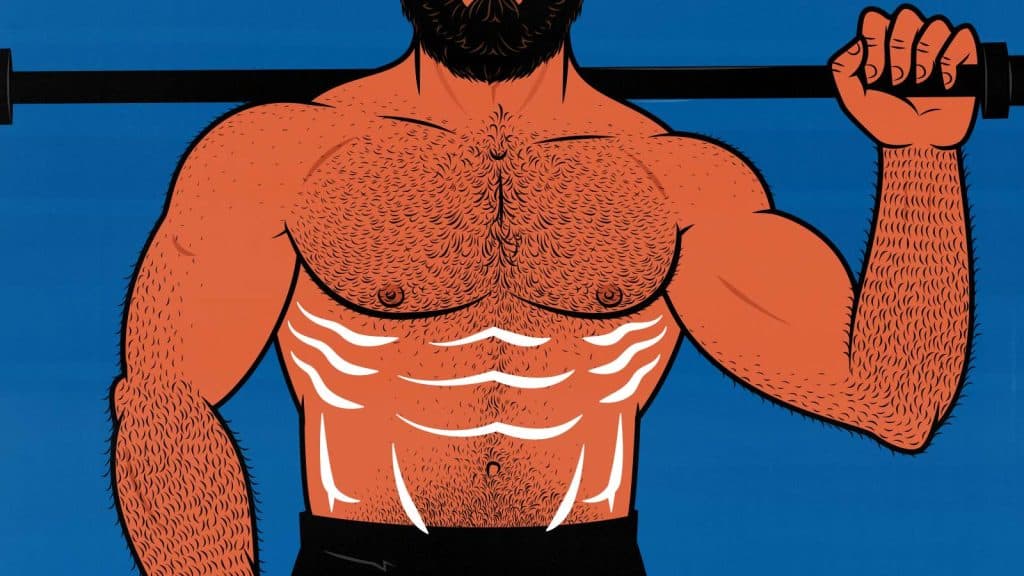
How to Cut After Bulking
There’s a long tradition of bulking up and then cutting away the fat. It’s popular with all types of lifters, from bodybuilders to powerlifters, because it’s the most reliable way to build muscle and then get lean. Body recomposition and maingaining can also work well, for a time, but bulking and cutting are more powerful.
I’ve bulked and cut a few times, gaining 70 pounds at the same body fat percentage I started at. I’ve also helped a few thousand clients do it over the past decade. I’ll show you the before-and-after photos below.
Before we start, you probably have some questions. So, let’s blast through the most common ones:
- Maintenance periods after bulking to “lock in” your muscle mass. The idea is that it takes a few weeks or months for your new muscle to cement into place. So, by delaying your cut, you’d keep more of your hard-earned muscle. There’s no evidence for this, and it probably isn’t necessary.
- High-rep sets to focus on muscle definition. The idea is to switch from 6–12 reps per set to 15–30 reps. This was thought to give greater muscle definition. Both rep ranges are great for stimulating muscle growth, but high-rep sets can be absolutely miserable, especially when you aren’t eating as much food to fuel your workouts.
- Short rest periods. The idea is to use shorter rest periods to boost growth hormone, improving muscle growth and retention. The “hormone hypothesis” of muscle growth was mostly debunked, but short rest times can be effective if you program them properly.
- More ab training. Bodybuilders used to think you could train your abs to burn more ab fat (spot reduction). That myth died a decade ago. You could still train your abs to build bigger abs, but cutting makes it harder to build muscle, so you’d get even better results by training your abs while bulking.
- Shorter workouts to match your lower energy levels. When you’re cutting, you’re eating less food, so you have less energy. That can make it harder to survive big bulking workouts. Thus, cutting workouts are often shorter and easier. That makes sense, but it’s tricky, so we’ll talk about the pros and cons below.
- Long walks to burn fat faster. Cardio burns far more calories than lifting weights, making it easier to lose weight. Plus, most cardio adaptations are enhanced by losing weight. You can finish your cut with a higher VO2 max, a lower resting heart rate, and better performance.
- Cutting carbs (and ketogenic diets). The idea is that carbs are good for building muscle (true) but make it harder to lose fat (not true). Carbs are just as powerful while cutting. However, when you cut calories, you need to cut back on something. It’s usually best to cut back on both carbs and fat, but some people find it easier to lose weight on low-carb diets.
- Carb cycling. Some bodybuilders try to get the best of both worlds, eating low-carb diets on rest days, but eating more carbs in the meals before and after their workouts. That way, they show up to the gym with full muscles and higher energy levels. There’s some evidence to support this. Even the taste of carbs improves workout performance (study, study). It’s a good option to consider.
- Intermittent fasting. About a decade ago, bodybuilders started eating fewer meals instead of smaller meals because they thought it would improve their growth hormone production. That didn’t pan out, but intermittent fasting might help you control your appetite. It’s an option.
- Refeeds to revive your metabolism. Refeeds can give you a psychological break, and they might boost your metabolism a little bit during the refeed, but your metabolism will wither away again when you go back to cutting (meta-analysis). The best way to keep your metabolism high is to keep your activity levels high. More on that below.
We can keep the best methods, get rid of the worst ones, and build them into a balanced cutting routine.
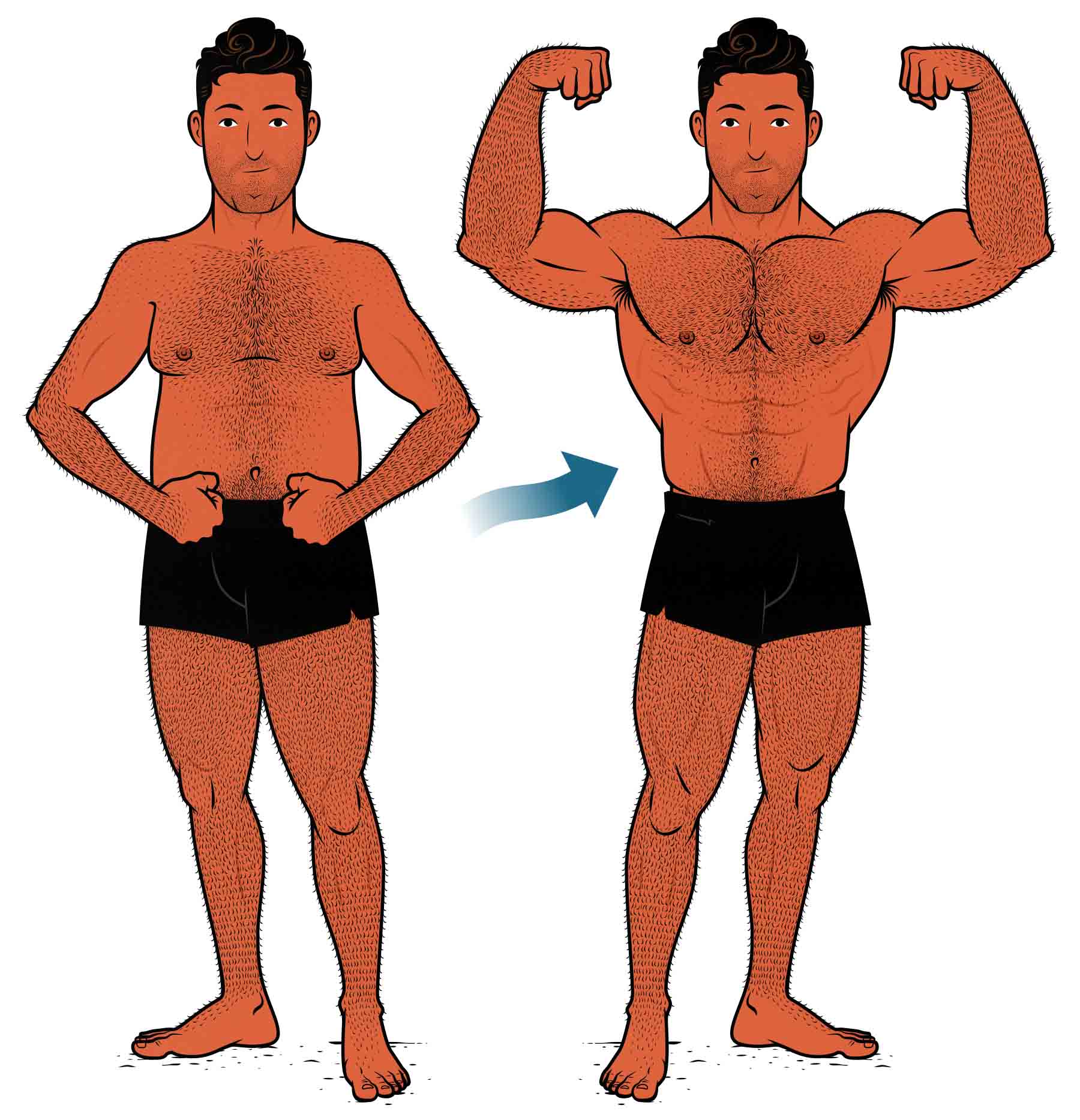
Do You Need to Cut?
I said I’d bulked and then cut a few times. That’s true, but most of those bulks were fairly lean, and most of the cuts were very easy. I’ve only needed one strict, hard cut.
During my first bulk in my early twenties, I gained 20 pounds without gaining a noticeable amount of fat:
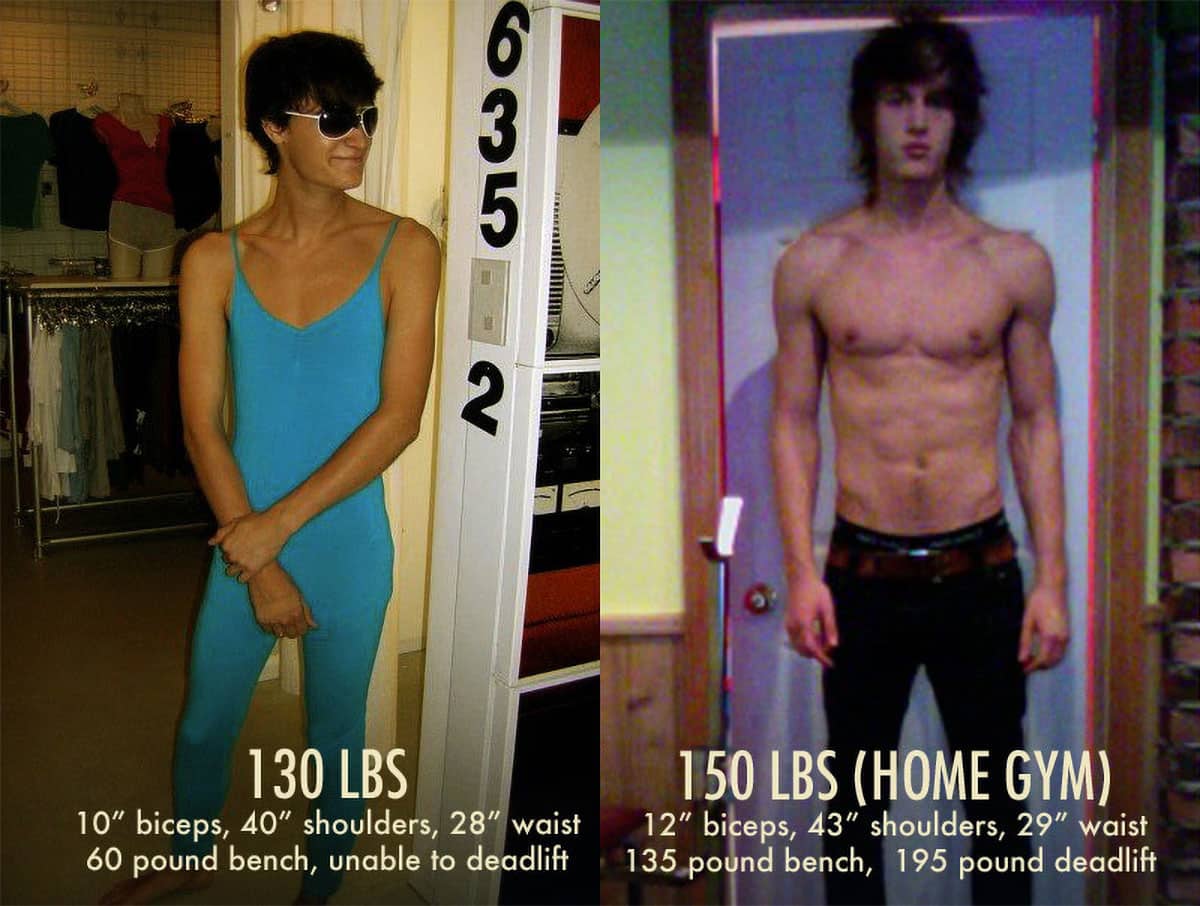
A year later, I bulked again, gaining another 25 pounds. This time, I went from around 11% body fat to 15%. I was happy with that, but I thought I was supposed to cut after bulking, so I cut 8 pounds in 4 weeks, finishing 17 pounds heavier than when I started:
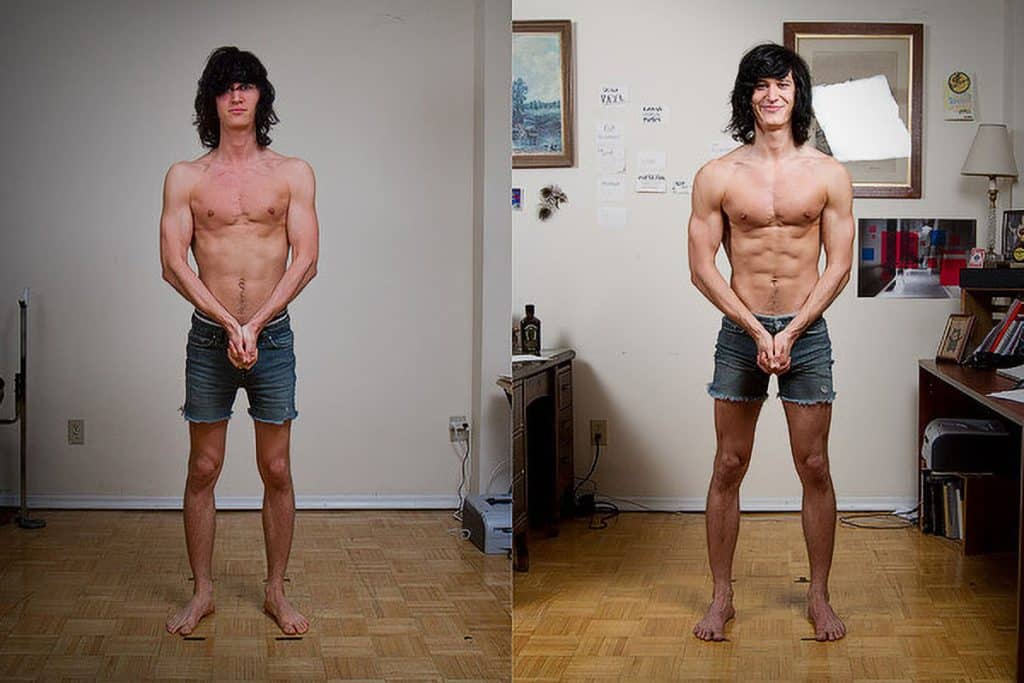
A couple of years after that, I tried a dirty bulk. I thought it would go better than it did. I wound up gaining a few pounds of muscle along with 20 pounds of fat. For the first time in my life, I was benching 225 for reps with no problem… but I was also overweight.
That’s the only time I’ve needed a traditional, 3-month cut. I cleaned up my diet, tracked my macros, and ate a calorie deficit of about 750 calories per day. I lost 20 pounds in 3 months:
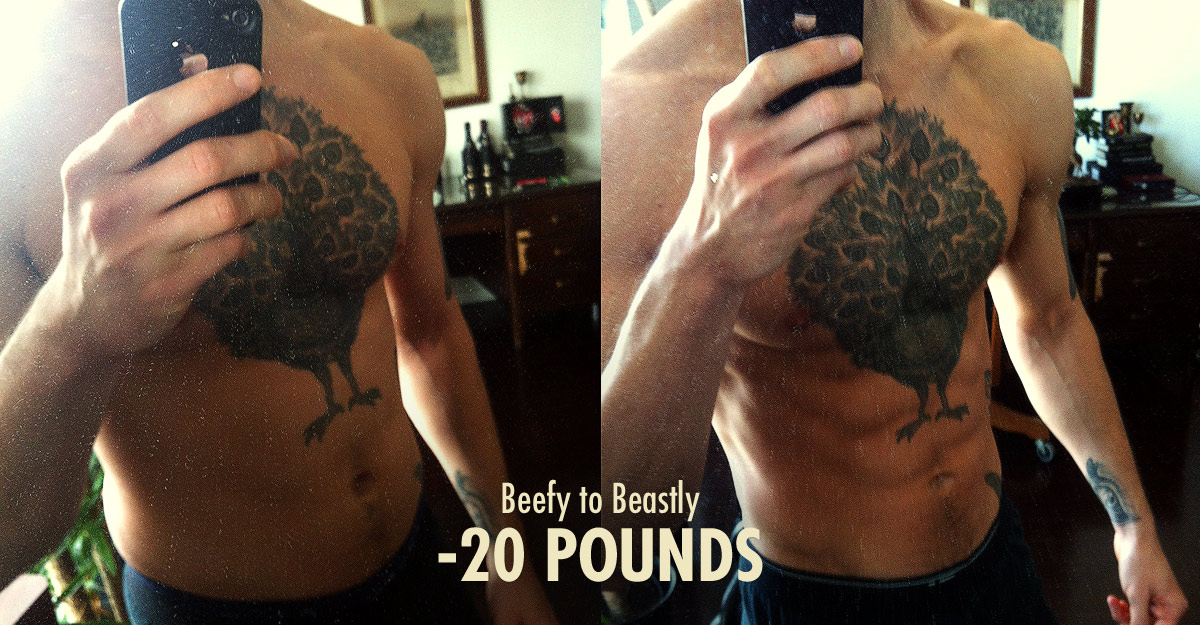
Since then, I’ve bulked a few more times, but at a slower pace and while eating a much better diet. I always gain some fat, but never so much that it becomes an urgent problem. For example, here I am right after my latest bulk, weighing 202 pounds:
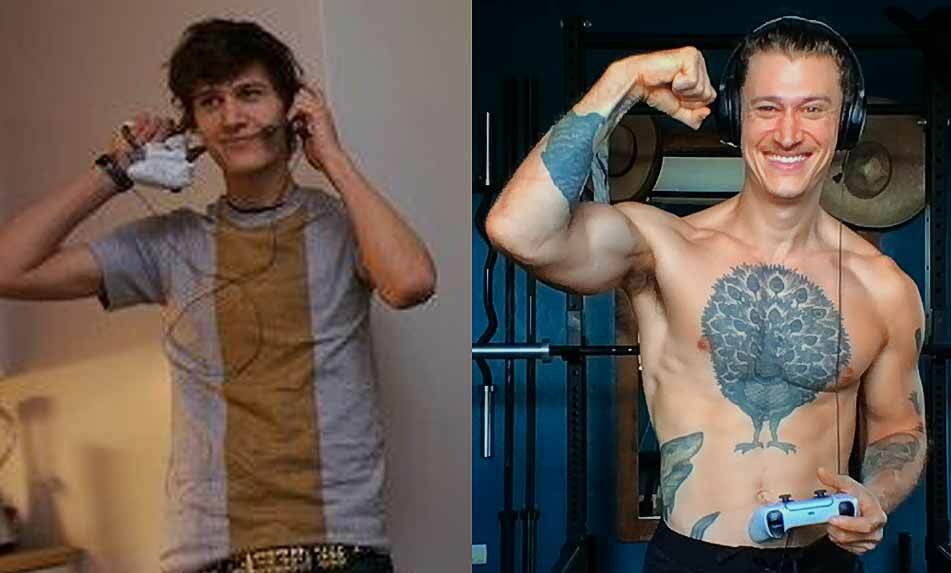
After I finished bulking, I went back to listening to my appetite. I was sick of overeating, so I ate fewer calories and lost ten pounds over the next few months. Since I was still lifting weights and eating well, all the weight I lost was fat. We call that Reverse Bulking. It works well for most naturally thin people.
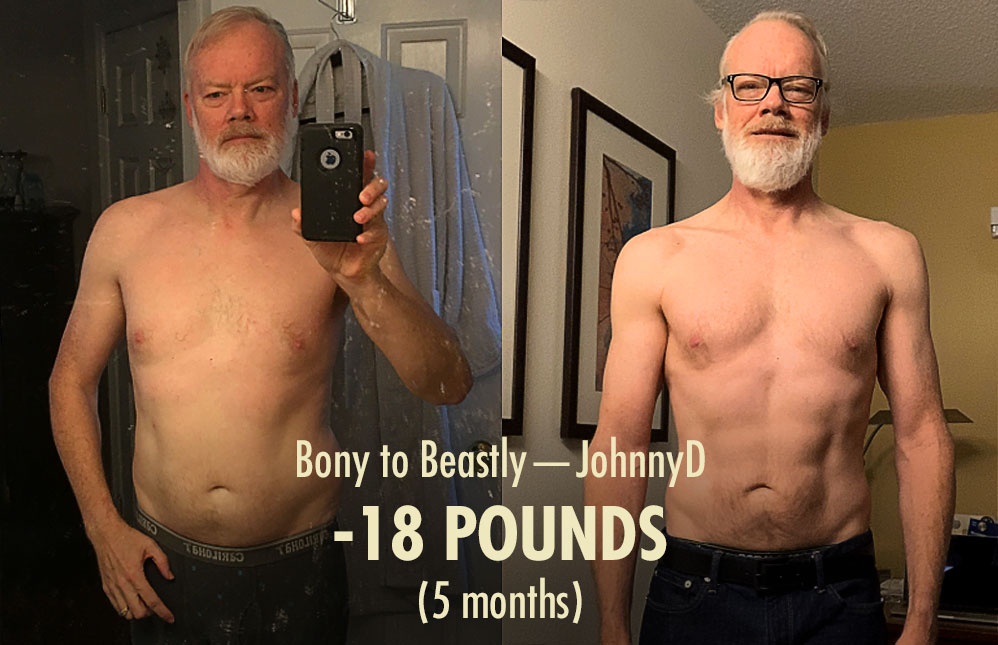
Most people need at least one classic cut, and some people need several. It’s by far the most powerful way to lose fat, and the results are incredibly consistent. If you do it properly, it’s guaranteed to work.
We’ll go through it step by step.
When to Stop Bulking
Don’t be too hasty to stop bulking. It’s common to get anxious about gaining weight, especially if you were skinny fat or overweight in the past. Some skinny guys get nervous about losing sight of their abs. That “ab anxiety” can prevent you from bulking for long enough to gain a substantial amount of muscle.
Ideally, you’d bulk for several months in a row. I recommend bulking for about 5 months. If you’re nervous about getting too fat, you can do a lean bulk, gaining weight more slowly. Same thing if you notice a bit of fat gain. Don’t give up, just slow down. Here’s how to do that.
If you cut too soon, you might chisel away the fat without having built much muscle underneath. Better to make sure you’ve got enough muscle underneath.
On the other hand, you don’t want to bulk for so long that you get fat. You should bulk at a pace that gives you relatively lean gains and stop before your waist circumference gets to 40 inches (measured at the height of your belly button). At that point, you’re on the cusp of becoming overfat, and it can be unhealthy to keep going. If you want to play it safe, you could stop before your waist gets to 36 inches.
It’s even better if you finish your bulk with a leaner waist, but don’t stress too much. If your waist is 36 inches or less, you don’t need to worry about being too fat.
How to Cut After Bulking
Keep Lifting Weights
You can keep following the same workout program you used while bulking, especially if it worked well for you. For example, if you’re following our bulking program, you’d keep progressing through the workout routine, just while eating fewer calories. It’s simple, and it works incredibly well:
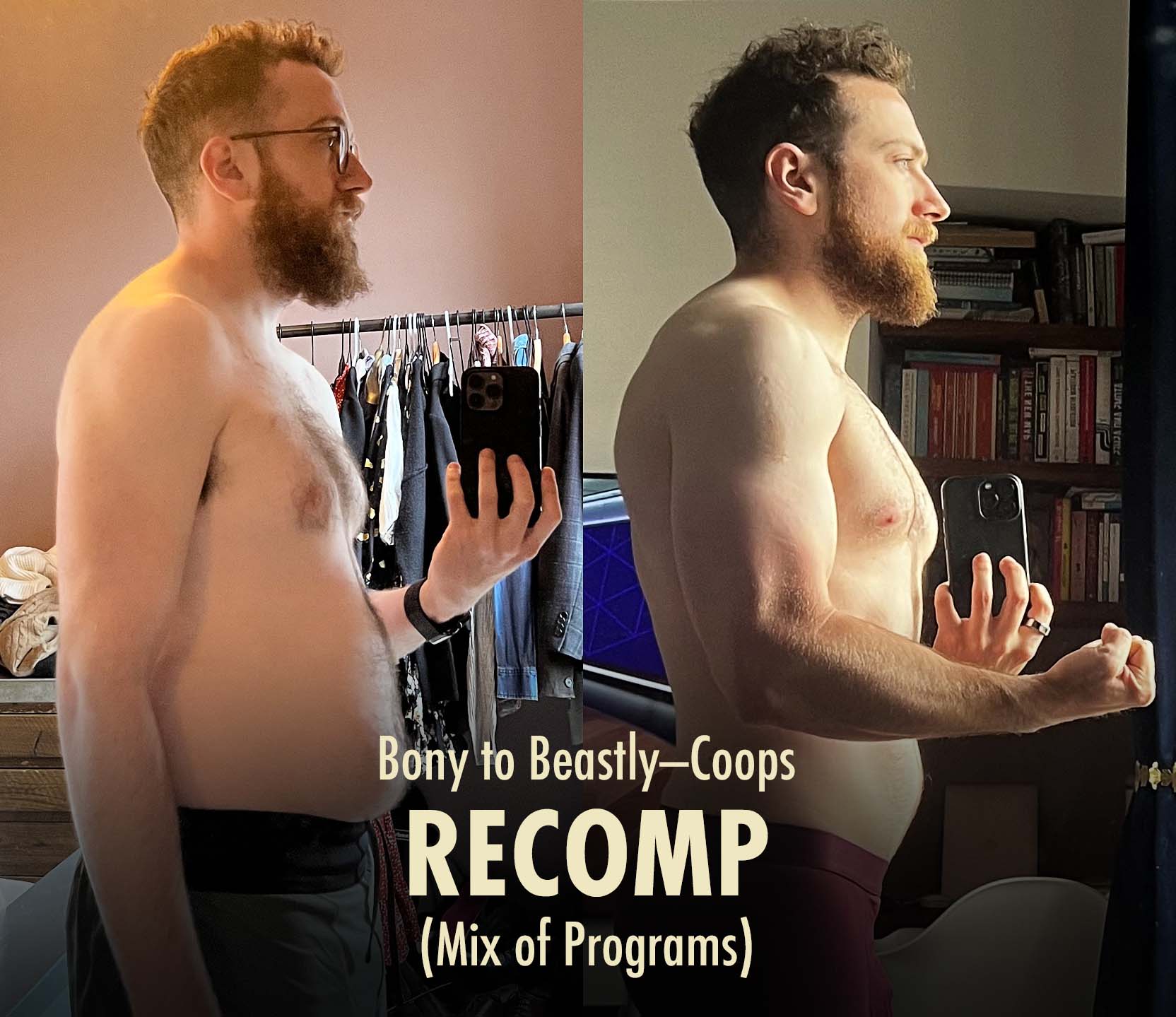
When you cut, should your workouts be shorter? Bulking gives you the energy to survive and recover from longer workouts. Cutting makes your training harder. This is where it gets tricky. A systematic review of 15 studies found that people who reduce their workload while cutting lose slightly more muscle mass (study).
However, the studies showing muscle loss were on bodybuilders cutting to under 7% body fat. At the beginning of their cuts, they gained a small amount of muscle. It was only at the end, when they dipped down under 10% body fat, that they started to lose lean mass (study). So, if you cut down to a more reasonable 10–15% body fat, you probably don’t need to worry (study, study).
Cutting won’t be difficult right away, but if you cut hard enough for long enough, you’ll probably start to yearn for shorter, easier workouts. That makes sense. You don’t need that many sets to maintain your muscle mass. Your workout routine just needs to be balanced. At a minimum, you need some squats, presses, deadlifts, and pulls. If you care about your arms, abs, calves, or neck, then train those, too.
- 3 sets per exercise should be enough. You might be able to get by with 2.
- Squatting and deadlifting just once per week is okay, especially if you add an isolation exercise for your quads and hamstrings.
- If you get weaker, add more sets for the muscles that are getting weaker. You can’t rely on what works for other people working for you. There are always people who respond better and worse than average. You have to track and adjust.
Cut Your Calories
To switch from bulking to cutting, you need to get out of a calorie surplus and into a calorie deficit. You don’t need to know how many calories you’re eating or burning. All you need to do is weigh yourself every week, eating a bit less whenever your weight stalls. Still, it’s important to know what’s going on under the hood.
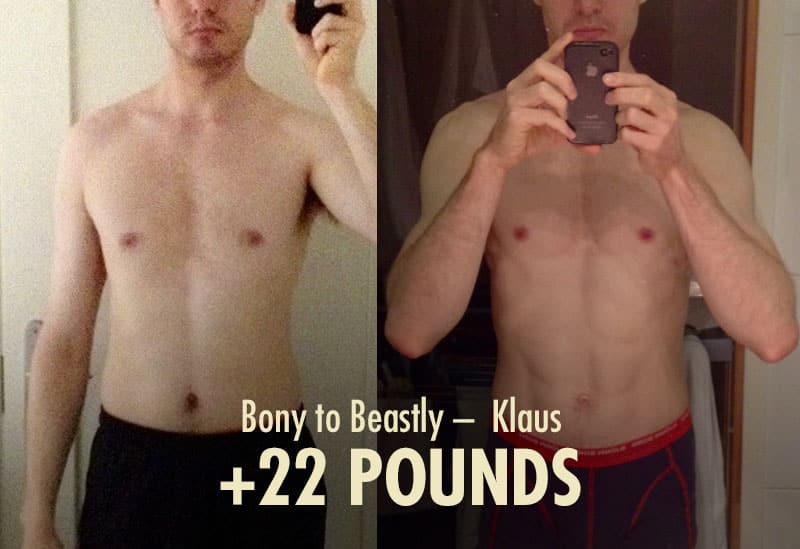
To burn a pound of fat per week, you need a deficit of about 500 calories per day. That’s fast enough to burn 20 pounds in 4–5 months, and it’s slow enough that you can maintain your muscle and strength. You can lose anywhere from 0.5–2 pounds per week, though. Just make sure you aren’t losing strength.
There are a few different ways to get into a calorie deficit. Some people get into a calorie deficit by estimating a calorie target and staying below it. Others do it more intuitively by removing snacks, skipping breakfast, or shrinking their serving sizes. I’ll cover some strategies in the next section.
Start by getting out of your calorie surplus. If you were gaining a pound per week, your surplus was probably about +400 per day. You can cut those 400 calories out of your diet. You could try that out for a week to see if you lose weight, but you’ll probably need to remove 500 more calories. 500 calories is the size of a big snack, small meal, or typical bulking smoothie.
Note: if you stopped gaining weight as you neared the end of your bulk, then you aren’t in a calorie surplus anymore. It’s common for your metabolism to speed up while bulking. Most people hit a plateau near the end. Remove 500 calories from what you’re currently eating.
Weigh Yourself Every Week
I recommend weighing yourself first thing every Sunday morning before having anything to eat or drink. The steadier your routine, the less your weight will fluctuate and the more accurate your weigh-ins will be. That’s why you need to weigh yourself on the same day at the same time every week.
Another popular approach is to weigh yourself every morning and use your average weekly weight. That’s more precise, but it’s overkill for most people, and it removes the excitement of fighting to ace your weekly weigh-in.
If you aren’t losing weight, or if you want to lose weight faster, then eat less food. I recommend eating 100–200 fewer calories. That’s a banana, a glass of milk, or a protein shake. But you should probably keep having the protein shake. It’s hard to eat enough protein while cutting.
If you lose strength or want more calories, eat more calories. I recommend eating 100–200 more calories. That isn’t much, but it can make a big difference, especially if it lets you have some carbs before working out.
Keep Eating Plenty of Protein
You need 0.7–1 gram of protein per pound of body weight per day while cutting. Some guys (like Menno Henselmans) argue that 0.7 is plenty. Most experts recommend playing it a little safer and aiming for a full gram per pound. I usually aim for the full gram.
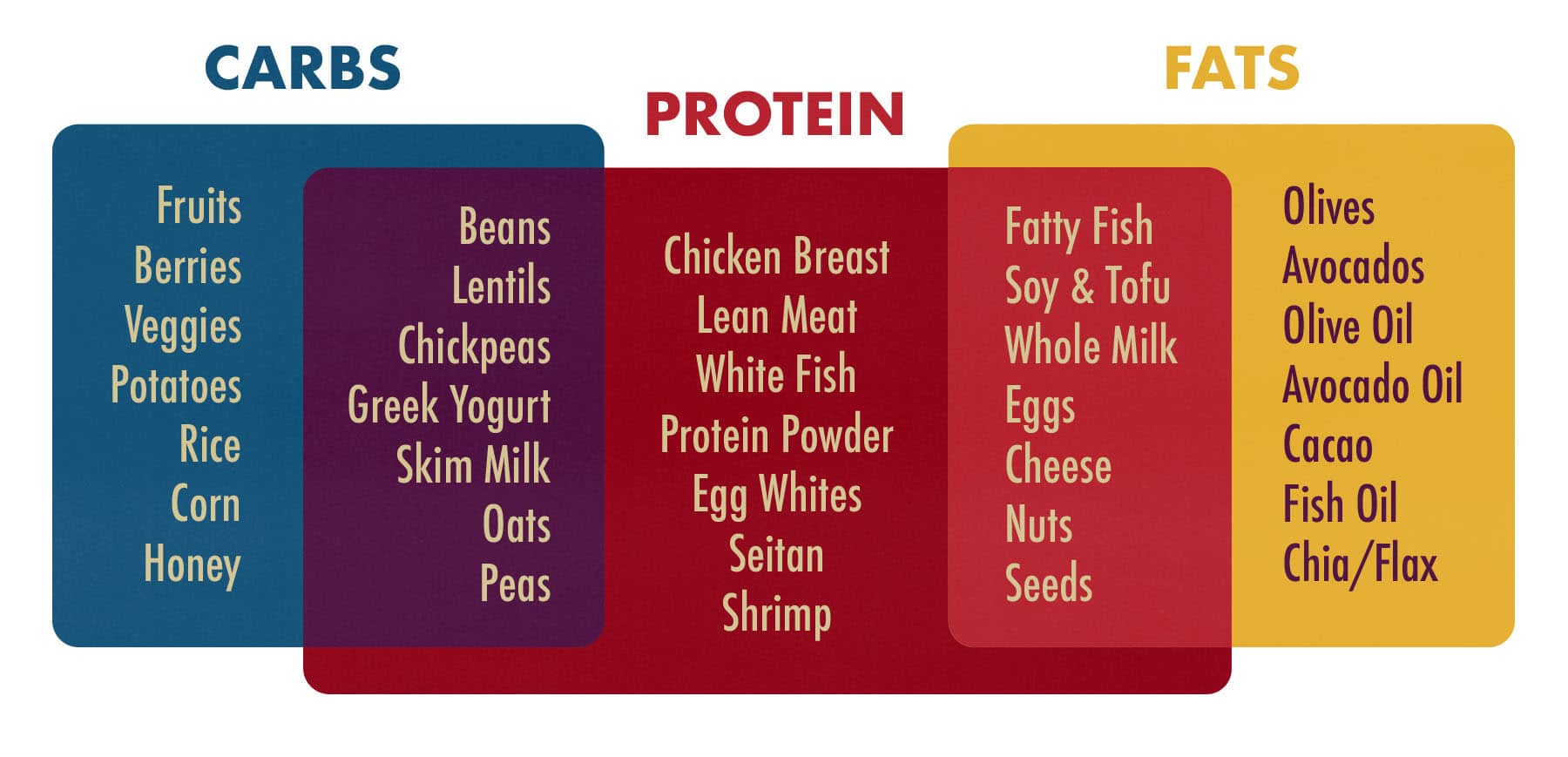
Those protein targets are easy to hit while bulking, but when you switch to cutting, it gets much harder. You’re eating less food, so a greater proportion of it needs to be protein. Here are some tips:
- Lean meat is higher in protein and lower in fat. That’s why bodybuilders love chicken breasts, extra-lean cuts of steak, and white fish. Tofu can work here, too.
- Fatty fish (like salmon) is high in both protein and omega-3s. White fish (like tilapia) is lower in calories, but you don’t get those nutritious omega 3s.
- Low-fat Greek yogurt (and cottage cheese) is low in calories, high in protein, fairly filling, and tastes great with frozen berries (which are nutritious and low in calories).
- Mix high-protein carbs and fats together. For example, eggs have more fat than protein, and beans have more carbs than protein, but when you combine them, you get a high-protein meal with moderate carbs and moderate fat.
- Keep some protein powder handy. Sometimes, you need an easy source of pure protein. I recommend having one scoop per day, but you can safely have as many as 3 servings per day for a few months.
Eat Filling Foods
When you finish bulking, you’ll probably be sick of overeating. Cutting feels like a relief. The first few pounds will melt off no problem. But as you get deeper into your cut, and as your diet get gradually smaller, your hunger will pick up. Here are some tips:
- Some drinks are low in calories. Black coffee, tea, and kombucha are nutritious and low in calories. Sparkling water and diet soda aren’t nutritious, but they’re low in calories and seem to be harmless.
- Fill up on fibrous foods. Fibre only has 2 calories per gram and often comes along with plenty of water. Think of apples, pears, oranges, grapefruits, strawberries, frozen berries, watermelons, broccoli, cauliflower, bell peppers, carrots, tomatoes, cucumbers, and pickles. You can eat large servings of those foods while cutting. Salads and fruit salads are great.
- Eat “slow” carbs like oats, beans, lentils, brown rice, corn, and peas. These carbs are rich in nutrients, high in fibre, and contain some protein. They also digest slowly, keeping you full for longer.
- Cook with onions, garlic, vinegar, and spices. They’re incredibly nutritious, very low in calories, good for your digestion, and take up room in your stomach.
- Don’t go crazy with butter and oils. It’s okay to cook with a little bit of oil (like olive oil or avocado oil) but try to use it in moderation. A single tablespoon of oil has 120 calories and isn’t particularly filling. Better to get more of your fats from fish, nuts, seeds, and avocados.
- Eat more soups and stews. The water in them takes up space in your stomach, and they also take quite a while to eat. The salt and umami flavours make them quite satisfying.
- Avoid junk food. I don’t care if you have a treat now and then, but junk food isn’t very nutritious or filling per calorie, so it shouldn’t make up a big portion of your diet. If you can’t control your cravings, don’t keep junk food around the house.
- If you still feel hungry after eating, stand up and do something. If you distract yourself for 20 minutes, the hunger will probably fade.
- Don’t mindlessly eat while watching TV. Instead, try whittling wooden idols, sharpening knives with a whetstone, painting Warhammer figurines, playing video games, or drawing.
- Popcorn is healthy and low in calories. It’s just popped corn. The catch is that you need to find popcorn that doesn’t have added sugar or fat, as those drive the calories up.
- Keep plenty of healthy foods around the house. Maybe that means making some homemade protein bars and a big pot of chili every Sunday. That way, you have easy meals to satisfy both sweet and salty cravings.
- Try to get enough sleep. You’ll have more willpower and less mindless hunger. If you have trouble sleeping, here’s our article on sleep hygiene.
Keep Your Activity Levels High
When you switch from bulking to cutting, your metabolism will slow. The longer you cut, the slower it will get, shrinking your calorie deficit, and forcing you to eat less food to continue losing weight. At the beginning of your cut, you might be losing weight while eating 2,500+ calories. By the end, you might be maintaining your weight at 1,800. You should fight against that.
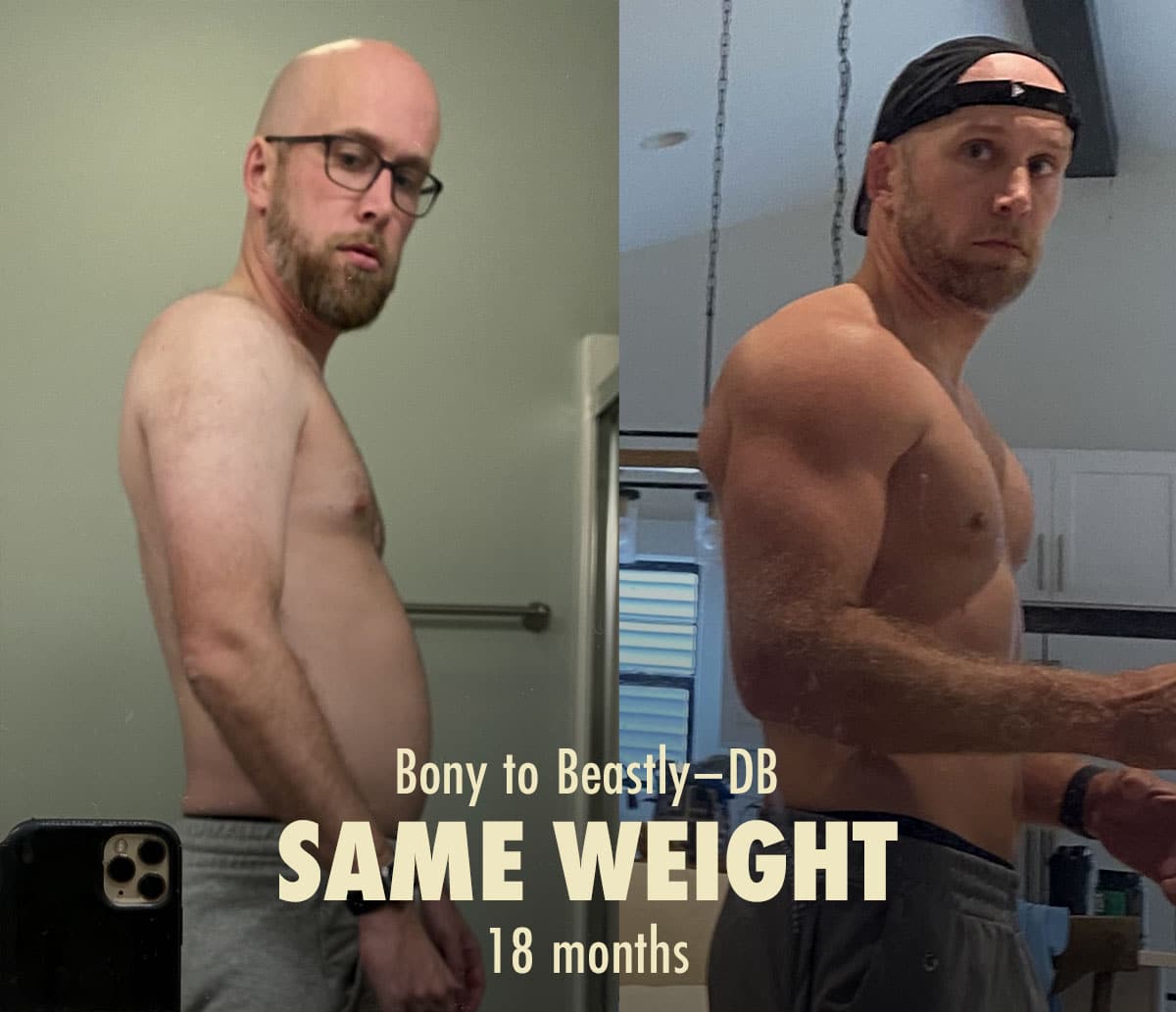
Some metabolic slowing is unavoidable. A pound of fat burns about 2 calories per day at rest (study), but it also takes quite a few calories to carry that fat around. When you factor that in, losing a pound of fat usually slows your metabolism by about 10 calories per day.
But most of the slowing comes from being less active (study). Even if you keep lifting and doing your cardio, you might find yourself lying down instead of lounging, lounging instead of sitting, and sitting instead of standing. You might also find yourself taking fewer steps per day.
I recommend tracking your step count. You can put a $15 pedometer in your pocket, download a pedometer app on your smartphone, or use a fitness watch (Fitbit, Garmin, Apple, or Polar). At a minimum, you should maintain the same step count you had before cutting. Ideally, you’d aim for at least 8,000 steps per day.
Do Cardio (Such as Brisk Walking)
Tracking your steps is a good first step, but I recommend also doing some cardio. It doesn’t need to be complicated or even difficult. Long, easy cardio sessions are an easy, enjoyable way to burn a ton of calories while improving your health and fitness.
Here are some ideas:
- Brisk walking: First thing every morning, head out for a 20–30 minute walk. Walk as fast as you can. The higher your heart rate, the better. Once per week, head out on a longer walk at a more sustainable pace, starting with 30 minutes and going 10% longer every time until you get to 90 minutes.
- Rucking: As you’re cutting, you’ll be losing weight while getting fitter. Walking can quickly become too easy. You can solve that by putting some weight in a backpack. It doesn’t take much. I wrote a rucking article here.
- Incline treadmill (or an elliptical): This is really popular with bodybuilders, and I tried it during one of my few strict cuts. It worked really well.
- Hiking: This is a combination of rucking and walking on an incline treadmill. You head out with a backpack and hike through difficult terrain. It’s quite a bit more difficult than walking, and you get to enjoy the outdoors.
- Almost anything else: Jogging, cycling, swimming, sports, or whatever you prefer. If you already have an enjoyable cardio routine, just keep it up.
For more, I wrote a beginner’s guide to cardio.
Cutting Supplements
I can’t think of a cutting supplement that’s better than coffee or tea. Protein powder can be helpful, but that’s mainly for convenience. Beef jerky, chicken breast, fish, Greek yogurt, and tofu are more nutritious and more filling.
If you have any questions about supplements, though, feel free to ask below.
Refeeds & Diet Breaks
A refeed or diet break is when you stop cutting for a couple of days or weeks. You’d go back to eating at maintenance. For example, if you were losing a pound per week, you were in a calorie deficit of 500 calories per day, so you could add those 500 calories back to your diet.
Refeeds and diet breaks aren’t necessary. They don’t seem to have any lasting effect on your metabolism or improve your results in any way (meta-analysis).
They aren’t harmful, either, though. If you need a break, you can take a break. Just make sure you aren’t eating so much that you gain weight. The idea is to cancel out the calorie deficit, not drive yourself into a calorie surplus.
How Long to Cut For
If you only have a few pounds to lose, you could do a “mini-cut” for 4–5 weeks. You’d cut aggressively, with a deficit of 500–1,000 calories, aiming to lose up to 2 pounds per week. That can work well if you’re cutting after a lean bulk.
Most people need a classic cut, which can last anywhere from 3–6 months. If you lose a pound per week, that will get you 15–30 pounds of fat loss.

Alright, that’s it for now. If you want us to walk you through the process of bulking and cutting, check out our Bony to Beastly Program or Outlift Intermediate Hypertrophy Program. Both of them include a full workout routine, diet guide, and lifestyle recommendations. We’ll also give you a recipe book full of nutritious meals with all of the calories and macros calculated out for you. And they include coaching from us in our online community.
Shane Duquette is the founder of Outlift, Bony to Beastly, and Bony to Bombshell, each with millions of readers. He's a Certified Conditioning Coach (CCC), has gained 70 pounds, and has over a decade of experience helping more than 15,000 people build muscle. He also has a degree in fine arts, but those are inversely correlated with muscle growth.

Muscle-Building Mini-Course via EMAIL
Sign up for our 5-part muscle-building mini-course that covers everything you need to know about:
Here are some related articles